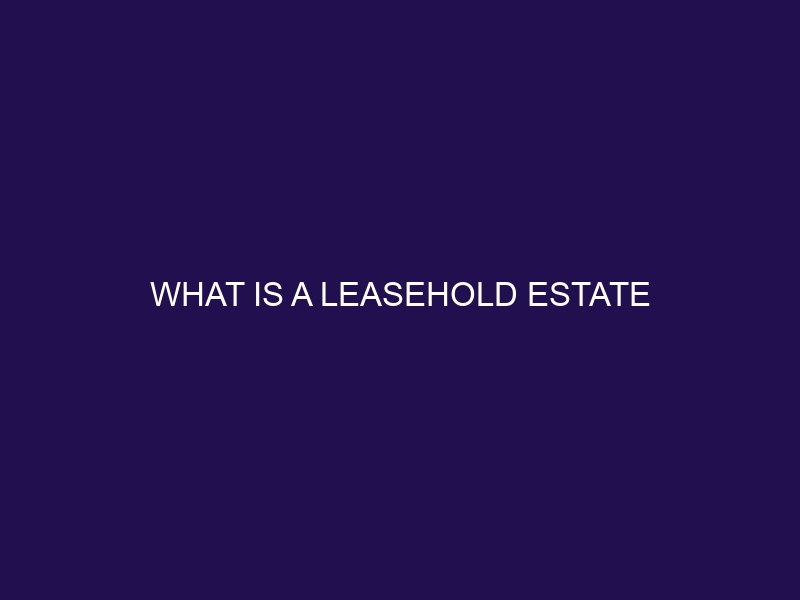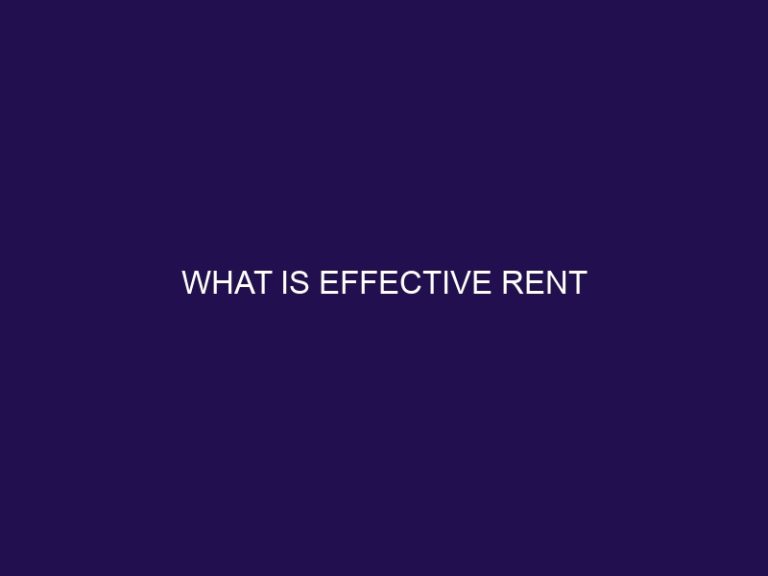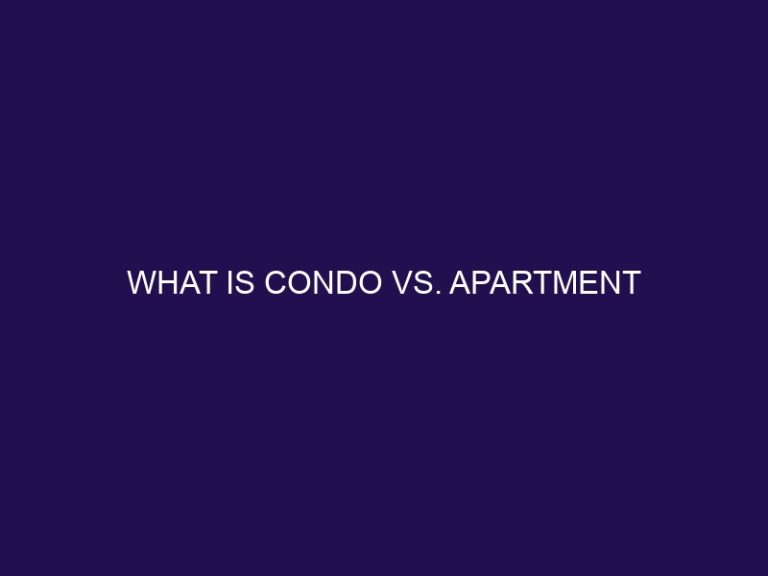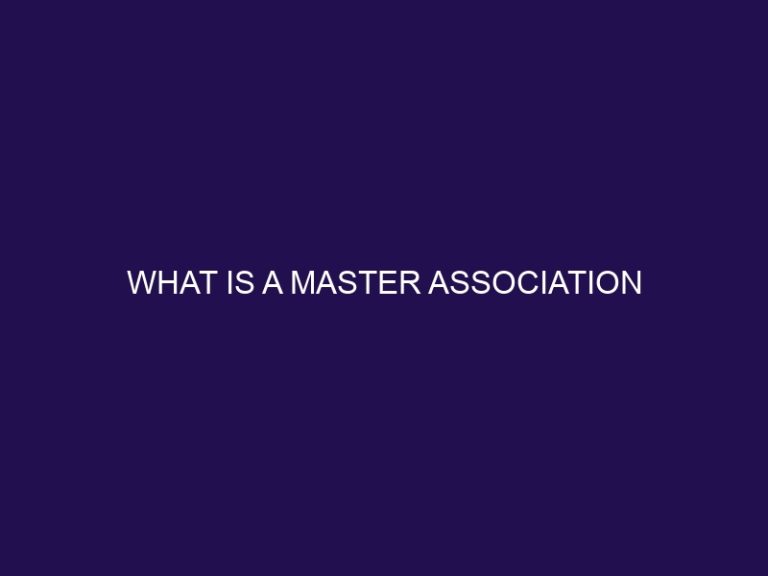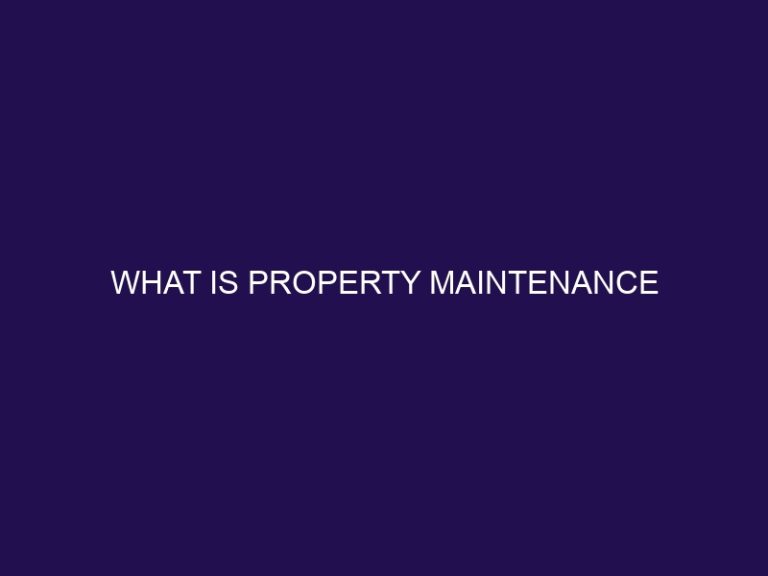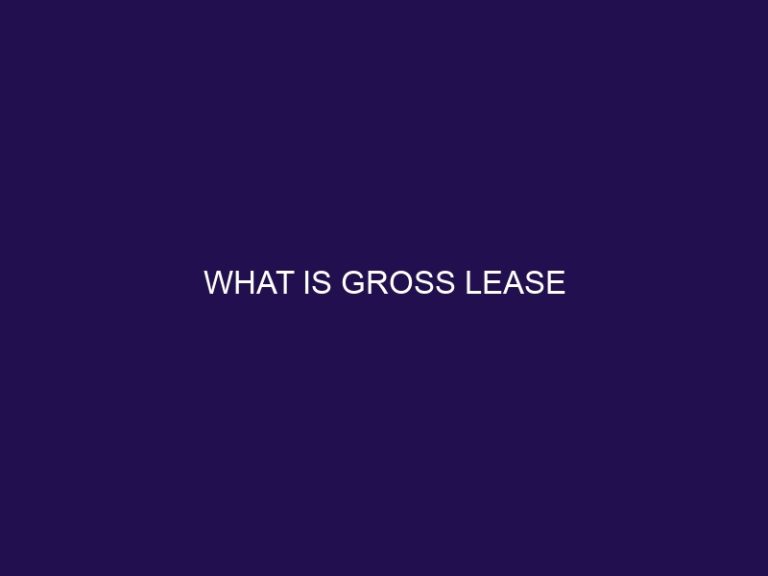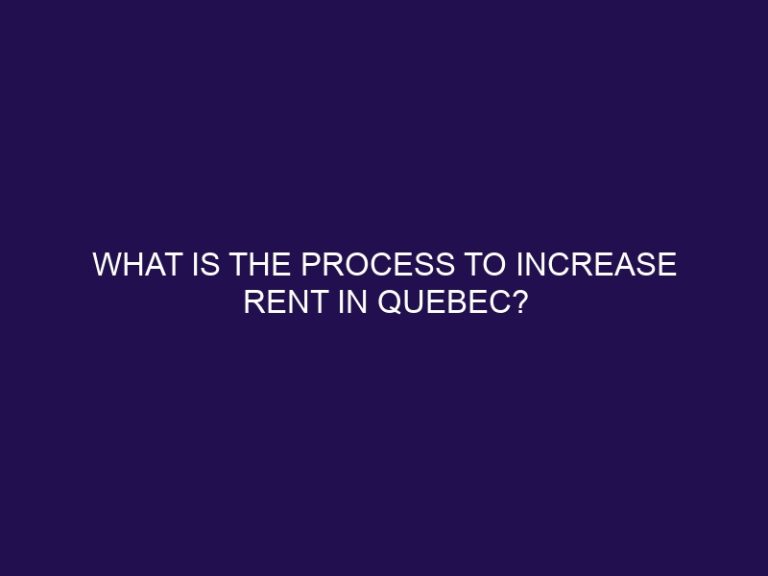What is a Leasehold Estate
A leasehold estate refers to a type of real estate ownership in which a person or entity holds the right to use and occupy a property for a designated period of time, known as the lease term. It is essential to understand the key features, benefits, limitations, and considerations associated with leasehold estates.
Types of Leasehold Estates:
- Residential leaseholds
- Commercial leaseholds
- Ground leases
- Agricultural leases
Each type has its own specific terms and conditions.
Key Features of a Leasehold Estate:
- Limited Ownership: Unlike a freehold estate, a leasehold estate grants the owner limited ownership rights to the property.
- Time Limitations: A leasehold estate has a specific lease term, after which the ownership reverts back to the landlord.
- Monthly Rental Payments: As a tenant of a leasehold estate, you are typically required to make monthly rental payments to the landlord.
Benefits of Leasehold Estates:
- Lower Cost of Entry: Leasehold properties often have a lower initial cost compared to freehold properties, making them more affordable for individuals or businesses.
- Flexibility: Leasehold estates offer flexibility in terms of lease duration, allowing individuals or businesses to choose a term that aligns with their needs.
- Maintenance and Repairs: In leasehold estates, the responsibility for property maintenance and repairs may fall on the landlord, relieving tenants of these burdens.
Limitations and Considerations of Leasehold Estates:
- Ownership Rights: Leasehold estate owners have limited ownership rights, and their rights to make changes or alterations to the property may be restricted.
- Lease Terms and Termination: Leasehold estates have specific lease terms, and if the terms are not renewed, the ownership of the property will be transferred back to the landlord.
- Upfront and Ongoing Costs: Tenants of leasehold estates may be responsible for upfront costs like security deposits, as well as ongoing costs such as rental payments and maintenance fees.
Leasehold Estate vs Freehold Estate: Understanding the Difference
It is important to differentiate between leasehold estates and freehold estates, as they have distinct characteristics and ownership arrangements. Freehold estates grant the owner permanent ownership of the property, while leasehold estates have a time-limited ownership arrangement. Understanding this distinction can help individuals make informed decisions when it comes to real estate ownership.
By understanding what a leasehold estate entails, its key features, benefits, limitations, and how it differs from a freehold estate, individuals and businesses can make informed decisions about their real estate investments.
What is a Leasehold Estate?
Leasehold estates, an intriguing concept in real estate, come in various forms! Get ready to dive into the world of leasehold estates and explore their different types. Unravel the fascinating details behind each type and discover how they shape the rights and responsibilities of property ownership. From perpetual leases to ground rents, we’ll unravel the intricacies and shed light on the nuances of leasehold estates. Get ready to embark on a captivating journey through the diverse realm of leasehold estates!
Types of Leasehold Estates
- There are four main types of leasehold estates: Estate for Years, Periodic Estate, Estate at Will, and Estate at Sufferance.
- Estate for Years: This leasehold estate has a specific starting and ending date.
- Periodic Estate: This lease continues for an indefinite period with no specific end date, usually renewing automatically.
- Estate at Will: This lease can be terminated by either party at any time without notice.
- Estate at Sufferance: This lease occurs when a tenant stays after the expiration of their lease and the landlord allows it.
Key Features of a Leasehold Estate
Leasehold estates come with unique characteristics that every prospective buyer should be aware of. In this section, we’ll explore the key features that define a leasehold estate, shedding light on limited ownership, time limitations, and the obligation of monthly rental payments. Brace yourself for an insightful journey into the intricate world of leasehold estates and the implications they have on property ownership.
1. Limited Ownership
- Limited ownership in a leasehold estate pertains to the restrictions and limitations imposed on the rights of the leaseholder. Here are some important considerations regarding limited ownership in leasehold estates:
- Ownership Duration: Leasehold estates have a predetermined lease term, after which ownership reverts back to the landlord.
- No Equity: Leasehold estates do not provide ownership equity or the opportunity to build equity through property value appreciation.
- Restrictions on Modifications: Leaseholders may face restrictions on making significant modifications or alterations to the property without the permission of the landlord.
- No Land Ownership: Leaseholders only hold ownership rights to the physical structure or unit, not the land it occupies.
- Transferability: Leasehold estates may have limitations on transferring ownership rights to another party, requiring approval from the landlord.
2. Time Limitations
Time limitations, including those related to leasehold estates, play a crucial role in decision-making. Understanding the implications of time limitations involves following a step-by-step process:
1. Lease Term: Begin by determining the duration of the lease. This could range from a short-term lease, spanning just a few months, to a long-term lease, lasting several years.
2. Renewal Options: Assess whether the lease allows for extending its duration beyond the initial term. It is important to consider if there are provisions in place to renew the lease.
3. Rent Increases: Carefully review the lease to ascertain if it permits rent increases during the lease term and the frequency at which they can occur. This information is vital for budgeting purposes.
4. Termination Clauses: Familiarize yourself with the conditions that govern the early termination of the lease. Understanding these clauses can help you plan ahead and navigate potential challenges.
5. Future Planning: Align the time limitations specified in the lease with your long-term goals. By doing so, you can ensure that the lease’s time constraints align with your future needs and aspirations.
By thoughtfully considering time limitations, you can make well-informed decisions regarding leasehold estates based on your unique circumstances and requirements.
3. Monthly Rental Payments
When considering a leasehold estate, it’s crucial to have a clear understanding of the concept of monthly rental payments. Here are some key points to take into account:
- Benefits of Monthly Rental Payments: Monthly rental payments offer tenants a predictable and consistent expense, enabling them to budget more effectively.
- Possible Rent Increases: Lease agreements may include provisions for rent increases over time. It’s important for tenants to be aware of these potential increases and incorporate them into their long-term plans.
- Inclusions in the Monthly Rental Payment: The monthly rental payment may encompass additional costs like utilities, maintenance, or other services. It’s crucial to clarify the inclusions before signing a lease.
- Due Date for Monthly Rental Payment: Tenants are required to make their monthly rental payment by a specific due date. Failure to adhere to this schedule may result in penalties, so it’s essential to comply with the agreed-upon time frame.
- Payment Methods: Landlords might offer various payment methods, such as online portals or direct debit. Understanding the available options can help tenants optimize and streamline their rental payment process.
Benefits of Leasehold Estates
Experience the advantages of leasehold estates and unlock a world of benefits. Discover the lower cost of entry, flexibility, and easy maintenance and repairs that come with this type of property ownership. With a leasehold estate, you can enjoy the perks of affordable access to desirable locations while having the freedom to adapt your space to suit your needs. Say goodbye to the hassles of expensive maintenance and welcome the convenience of a leasehold estate.
1. Lower Cost of Entry
When considering leasing a property, one of the key benefits is the lower cost of entry compared to purchasing a property outright. Here are some reasons why:
- Lower initial investment: Leasing requires a smaller upfront payment compared to a down payment when buying a property.
- Affordability: Monthly lease payments are typically lower than mortgage payments, making it more accessible for individuals with limited financial resources.
- Reduced maintenance costs: The responsibility for maintenance and repairs often falls on the landlord, saving the lessee from extra expenses.
In the early 20th century, leasehold estates became popular in urban areas as a way to provide affordable housing options to working-class individuals. This allowed individuals to have a place to live without the substantial upfront costs associated with purchasing a property.
2. Flexibility
Flexibility is a key advantage of leasehold estates, offering individuals the ability to adapt and make changes to their living arrangements without the long-term commitment associated with owning a property.
- Renewal options: Leasehold agreements often allow for lease extensions or renewals, providing tenants with the opportunity to continue occupying the property beyond the initial lease term.
- Relocation possibilities: Leasehold estates offer the flexibility to move to a different property or location once the lease term ends, enabling individuals to explore new opportunities or change their living situation.
- Modification permissions: Depending on the terms of the lease, tenants may have the freedom to make alterations or improvements to the property, allowing for customization and personalization.
True story: Sarah, a professional with a dynamic job, opted for a leasehold estate due to its flexibility. Over the years, she had the freedom to relocate to different cities for career growth without the burden of selling or buying property. This flexibility allowed her to adapt her living arrangements to suit her changing needs and aspirations.
3. Maintenance and Repairs
Maintenance and repairs are important considerations when it comes to leasehold estates. Here are some key points to keep in mind:
- Tenant responsibility: In most leasehold agreements, tenants are responsible for routine maintenance and minor repairs.
- Landlord responsibility: Major repairs and structural issues are typically the responsibility of the landlord or property management.
- Communication: Clear communication between landlords and tenants is crucial to address maintenance and repairs promptly.
- Records: Both parties should keep records of maintenance and repairs for future reference or potential disputes.
In 1861, the historic Alnwick Castle in England, a leasehold estate, required extensive maintenance and repairs due to its age. The Duke of Northumberland invested in the castle’s restoration, ensuring its preservation for future generations to enjoy.
Limitations and Considerations of Leasehold Estates
Leasehold estates come with their own set of limitations and considerations that one must be aware of. From ownership rights to lease terms and termination, as well as upfront and ongoing costs, this section will shed light on the crucial aspects of leasehold estates. Discover how these factors can influence your experience as a leaseholder and gain valuable insights into the intricacies of this type of property arrangement. Prepare to navigate the world of leasehold estates armed with essential knowledge.
1. Ownership Rights
Ownership rights are a crucial aspect to consider when dealing with leasehold estates. Here are some key points to keep in mind:
- Access and use: As an owner of a leasehold estate, you possess the right to access and utilize the property for the entire duration of the lease.
- Interior modifications: Based on the terms of your lease, you may enjoy the freedom to make interior modifications to the property, such as painting or remodeling.
- Rental income: Depending on your agreement, you may hold the right to sublease the property and generate rental income.
- Transferability: Leasehold estates can be transferred or sold, allowing for potential financial gain.
- Legal protection: As the owner of a leasehold estate, you benefit from legal rights and protections that ensure you are not unfairly evicted or discriminated against.
Sarah signed a leasehold estate agreement for a commercial space. She exercised her ownership rights by renovating the space to align with her business’s brand. This attracted more customers and boosted her profitability. Subsequently, Sarah sold her leasehold estate at a higher price, illustrating the potential financial benefits associated with ownership rights in leasehold estates.
2. Lease Terms and Termination
Lease Terms and Termination are crucial factors to consider when entering into a leasehold estate. It is of utmost importance to thoroughly review the terms outlined in the lease agreement, including the duration of the lease and any conditions for termination. When assessing the lease, keep these key aspects in mind:
1. Duration: Take the time to understand the length of the lease and whether it provides options for renewal or extension.
2. Termination clauses: Familiarize yourself with the conditions under which the lease can be terminated, such as non-payment of rent or violation of lease terms.
3. Notice requirements: Determine the amount of notice required for either party to terminate the lease. Additionally, take note of any penalties or fees associated with early termination.
4. Renewal options: Assess whether there are provisions for lease renewal and consider any associated costs or changes in terms.
Taking careful consideration of these Lease Terms and Termination provisions will help ensure a seamless rental experience and prevent any unexpected issues.
3. Upfront and Ongoing Costs
The upfront and ongoing costs associated with a leasehold estate should be carefully considered before entering into a lease agreement. These costs can vary depending on the terms of the lease and the specific property. Here is a breakdown of the costs involved:
| Upfront Costs: |
|---|
|
| Ongoing Costs: |
|---|
|
It is important to carefully review the lease agreement and clarify any questions regarding the upfront and ongoing costs before committing to a leasehold estate.
In history, the concept of leasehold estates can be traced back to ancient civilizations, where land was leased for agricultural purposes. The idea of paying upfront and ongoing costs in exchange for a temporary right to use and occupy the land has evolved over time and is now a common practice in real estate transactions worldwide.
Leasehold Estate vs Freehold Estate: Understanding the Difference
Leasehold Estate vs Freehold Estate: Understanding the Difference
A leasehold estate and a freehold estate are two different types of property ownership. Understanding the difference between the two can help individuals make informed decisions when it comes to buying or renting property.
- Leasehold estate: This type of ownership grants the right to occupy or use a property for a specified period, typically through a lease agreement. The land itself is owned by someone else, known as the freeholder or landlord.
- Freehold estate: With a freehold estate, an individual has full ownership of both the property and the land it sits on. They have complete control and can make decisions about the property as they see fit.
Fact: In some countries, leasehold estates are more common, while in others, freehold estates are the norm.
Frequently Asked Questions
What is a leasehold estate?
A leasehold estate refers to a tenant’s temporary possession of a real property for a specific period of time. It is a legally binding agreement that grants the tenant the right to occupy and use the property.
What types of leasehold estates exist?
There are different types of leasehold estates, including estate for years, periodic tenancy, and estate at sufferance. Estate for years is a fixed-term tenancy with a specified duration, while periodic tenancy has no specified end date and automatically renews. Estate at sufferance occurs when the tenant refuses to vacate the property after the lease has expired.
What is the difference between a leasehold estate and a freehold estate?
A leasehold estate is a temporary right to hold land or property, where the tenant has rights of real property. It is considered personal property, while a freehold estate grants permanent ownership of the land or property.
Can leasehold estates be bought and sold?
Yes, leasehold estates can be bought and sold on the open market. Investors have the opportunity to maximize profitability by acquiring leasehold properties and leasing them to tenants.
What are the risks associated with leasehold estates?
Understanding leasehold estates is crucial for real estate investors to minimize risks. Investors should be aware of red flags, assess potential costs, and carefully choose profitable properties. Additionally, eviction proceedings may be necessary if a tenant refuses to vacate the property after the lease has expired.
What is the historical background of leasehold estates?
The concept of landlord-tenant relationships dates back to ancient civilizations, with the Code of Hammurabi providing early legal regulations. In England during the Middle Ages, leasehold estates were essential to the feudal social order. Today, leasehold land may still be owned by the Crown in some cases.

